Service in the Structure of the Conference
Press "Show description" on any segment to learn more about service at that level.



Each group has but one primary purpose — to carry its message to the alcoholic who still suffers. - Tradition Five
-from Twelve Steps and Twelve Traditions, pg. 150
The entire structure of A.A. depends upon the participation and conscience of the individual groups… we are ever individually conscious of our responsibility for our own sobriety and, as a group, for carrying the A.A. message to the suffering alcoholic who reaches out to us for help.
-from “The A.A. Group…where it all begins,” pg. 10

Most A.A. members are primarily interested in their groups, in their own sobriety, and in helping other drunks one-on-one. And that is as it should be.
Once A.A. members are well informed about service, they often want to become involved and to take on their own service responsibilities.
-from of the A.A. Service Manual pg. S23

Membership in a home group is one of the keys to continuing sobriety. In a home group, most A.A.s accept service responsibilities and learn to sustain friendships. The home group is where they participate in business meetings and cast their vote as part of the group conscience of the Fellowship as a whole.
-from of the A.A. Service Manual pg. S25
For a group to keep going, all kinds of service must be done. It is through the combined efforts and ongoing commitment of group members that:
- A meeting place is readily available and maintained.
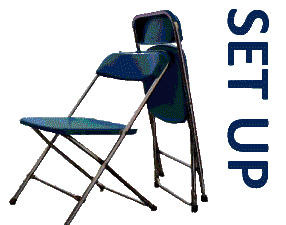
- Programs are arranged for the benefit of the alcoholics in attendance.
- Calls for help are answered.
- Voluntary contributions are collected to keep the group and the Fellowship going financially.
- Literature is provided for all members and lists of local group meetings are made available.
- Continuing contact is sustained with the rest of A.A.
-from the pamphlet "Inside A.A. Understanding the Fellowship and its Services," pg. 4
Group service — from coffee maker to secretary, treasurer, or chairperson — is usually the way members first experience the joy and the growth that can be derived from A.A. service. (The pamphlet "The A.A. Group" provides extensive information on group organization and opportunities for service.)
-from of the A.A. Service Manual pg. S25




For A.A. to run its own affairs , each A.A. group needs to make its voice heard on overall A.A. policies. This starts with a group’s general service representative (G.S.R.), who represents the voice of the group conscience and has the job of linking his or her group with A.A. as a whole.
-from the pamphlet "Circles of Love and Service"
The G.S.R. represents the voice of the group conscience, reporting the group’s thoughts to district committee member and to the delegate. This communication is a two-way street, making the G.S.R. responsible for bringing back to the group Conference Actions that affect A.A. unity, health, and growth. Only when a G.S.R. keeps the group informed, and communicates the group conscience, can the Conference truly act for A.A. as a whole.
-from of the A.A. Service Manual pg. S26
-from the pamphlet "Circles of Love and Service"
G.S.R.s serve for two years and the term frequently runs concurrently with those of committee members and the delegate. They represent their home group and are nominated and elected by group members.
G.S.R. Qualifications:
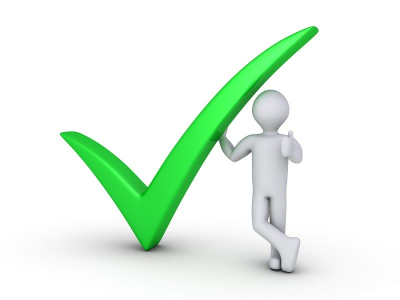
- Usually, prospective G.S.R.s have at least two years of continuous sobriety.
- They have time available for district meetings and area assemblies.
- They have the confidence of the group, and an ability to listen to all points of view.
- Experience shows that the most effective G.S.R.s have been active in group, intergroup, or other service, where they have developed a desire to serve, and encountered situations in which the Twelve Traditions have been called upon to solve problems.
G.S.R. Duties:

- G.S.R.s attend district meetings.
- They also attend area assemblies.
- They usually serve on group steering committees.
- G.S.R.s supply their D.C.M.s with up-to-date group information, which is relayed to G.S.O. (through the area registrar) updating G.S.O.’s database.
- They are knowledgeable about material available from G.S.O. — new literature, guidelines, bulletins, videos, tapes, kits, etc. — and they are responsible for passing such information on to the groups.
- They learn everything they can about the Twelve Traditions and Twelve Concepts and are familiar with the A.A. Service Manual, the books Twelve Steps and Twelve Traditions and A.A. Comes of Age, Twelve Concepts for World Service, and the pamphlets "The A.A. Group," "A.A. Tradition – How It Developed," "The Twelve Traditions Illustrated," and "The Twelve Concepts Illustrated" and they are familiar with the leaflet "Self-Support: Where Money and Spirituality Mix."
- They participate in district and area service meetings, and often help with planning for area get-togethers and conventions. Following these events, they make reports to their groups for the benefit of those who could not attend.
-from of the A.A. Service Manual pgs. S26 and S27
Each group sends its own ideas or problems to the assembly, where other groups can share their experience and provide help and support. From the assembly, each G.S.R. can take back to his or her group the shared experience of the rest of the assembly.
-from the pamphlet "Circles of Love and Service"
Dive in to Win
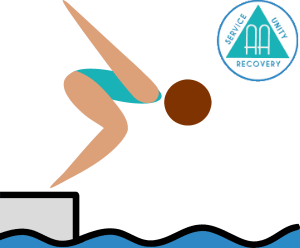
Some members put a toe in the water in group service. District 6 encourages G.S.R.s to dive in.
- District 6 D.C.M.s suggest all groups elect a G.S.R. to express their Group Conscience.
- Our Room and Ride Committee helps G.S.R.s attend area assemblies.
- All G.S.R.s are encouraged to join one of our standing committees and participate in district service.
- This broader level of service exposes the G.S.R. to new people and opportunities, develops self-confidence and promotes spiritual growth.
- Serving as a G.S.R. is a stepping stone to continuing service - in District 6, at least one year as a G.S.R. is required to stand for a D.C.M. or A.D.C.M. position.



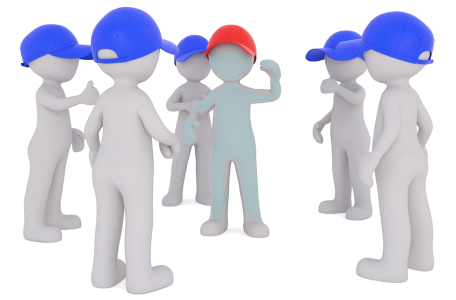
A district is a geographical unit containing the right number of groups — right in terms of the committee member’s ability to keep in frequent touch with them, to learn their problems, and to find ways to contribute to their growth and well-being.

The district committee member (D.C.M.) is an essential link between the group G.S.R. and the area delegate to the General Service Conference. As leader of the district committee, made up of all G.S.R.s in the district, the D.C.M. is exposed to the group conscience of that district. As a member of the area committee, he or she is able to pass on the district’s thinking to the delegate and the committee. (The pamphlet "Your D.C.M.," available from the General Service Office, provides basic information on this service job.)
-from of the A.A. Service Manual pg. S31
D.C.M. Qualifications:
- The district committee member has usually served as a G.S.R. and is elected by other G.S.R.s to take responsibility for district activities.
- A D.C.M. should have enough sobriety (generally four or five years) to be eligible for election as delegate.
- He or she also needs to have the time and energy to serve the district well.
D.C.M. Duties:
The D.C.M.’s job is primarily that of two-way communication. The D.C.M.:

- Receives reports from the groups through G.S.R.s and through frequent personal contacts with groups in the district.
- Holds regular meetings of all G.S.R.s in the district.
- Helps G.S.R.s make interesting reports to groups, and encourages them to bring new A.A. members to service events.
- Keeps groups informed about Conference-approved books and pamphlets.
- Organizes workshops and/or sharing sessions on service activities.
- Brings Traditions problems to the attention of the delegate.
- Makes a regular practice of talking to groups (new and old) on the responsibilities of general service work.
-from of the A.A. Service Manual pg. S32

District 6 serves Indian River, St. Lucie, Martin, Okeechobee and Glades counties, in South Florida Area 15.
The District acts as a communication bridge between local groups and the area delegate, with D.C.M. positions in each county. D.C.M.s from each county elect a County D.C.M. coordinator with the Alternate Chairperson acting as the District D.C.M. coordinator.
For more information visit our District 6 D.C.M. page.
District 6 also encourages service through its committees which carry the message to still suffering alcoholics while providing information, fellowship and opportunities for service to recovering alcoholics.
For more information about services performed by District 6 committees visit their pages on our website:




The area holds an important middle position in the Conference structure — through the elected delegate, it participates in A.A. worldwide, while through the D.C.M.s and G.S.R.s, it is close to the local scene. Any meeting of area G.S.R.s and the area committee is an assembly. The area assembly is the mainspring of the Conference structure — the democratic voice of the movement expressing itself.
-from of the A.A. Service Manual pg. S36
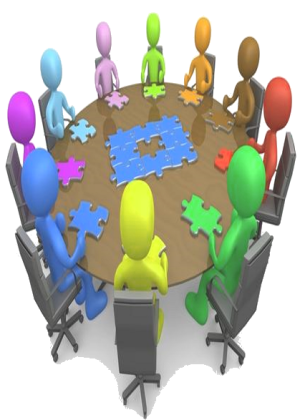
Perhaps more than any other group of people in A.A., the area committee is responsible for the health of the Conference structure and thus for growth and harmony in the A.A. Fellowship… An active committee deals with all kinds of service problems: Is experience being shared among groups? Is the A.A. message getting into hospitals, prisons, jails, and rehabilitation centers? Are news media and professionals who deal with suffering alcoholics well informed about A.A.? Are new groups and Loners being visited and helped?
-from of the A.A. Service Manual pg. S45
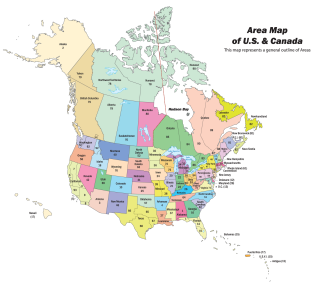
The U.S./Canada Conference is divided into 93 areas, made up of a state or province, part of a state or province, or in some cases parts of more than one state or province. At the area assembly, a delegate is elected to represent the area at the annual Conference meeting.
-from of the A.A. Service Manual pg. S17
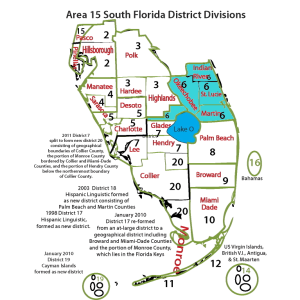
Delegate Area 15 serves South Florida, the Bahamas, U.S. Virgin Islands, British Virgin Islands, Antigua, St Maarten & Cayman Islands with the primary purpose of providing a forum for sharing collective 12th Step experience. The Area also has the responsibility to carry that message worldwide via the General Service Conference U.S./Canada.
-from of the Area 15 website
How best to carry the A.A. message has evolved through the years on an Area level as well as in the U.S./Canada. In Area 15, there are 16 committees focused on Area Business. These service committees meet four times a year to share experience. Once a year, in April, there is an Assembly where all Area Committee members and GSRs have a voting voice to aid the Area 15 South Florida Delegate in carrying our conscience to the annual General Service Conference.
-from of the Area 15 Legacy of Service
Once every two years at the October assembly a new panel is selected. The Area Delegate and Alternate delegate, Area Officers, and Area Committee Officers are all elected following the third legacy procedure.
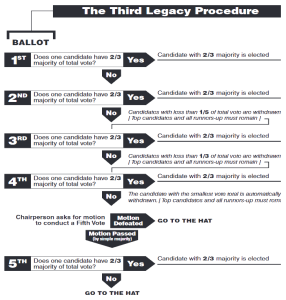
Each election is preceded by all candidates standing for the position presenting their qualifications, usually including their A.A. service history. The election then procedes as described on page S27 of the A.A. Service Manual. The procedure includes the following:
- The first candidate to receive two-thirds of the total vote is elected.
- Withdrawals start after the second ballot, with progressively higher percentages required to remain in the running.
- If no candidate has received two-third of the votes cast, at least four ballots and up to five ballots are held in attempt to achieve a two-thirds majority.
- If a two-thirds majority has still not been reached, lots are then drawn among the remaining candidates and the first name “out of the hat” takes the position.
District 6 elections are held at the November business meeting following the October Area assembly and use the same procedure.



Like other A.A. members, delegates come in all shapes and sizes. But some characteristics seem to make for well-qualified delegates. For example:

- Five or six years of continuous sobriety. The sobriety requirement varies from area to area; in any case, a delegate should have been sober long enough to be responsible and informed.
- Time available, not only for the week-long Conference meeting in April but for all the efforts needed before and after the Conference.
- Several years of active participation in local and area affairs, as a G.S.R. and as a committee member.
- Experience in chairing meetings.
- Thorough familiarity with the Twelve Traditions and the Twelve Concepts and how they apply to local problems.
- Knowledge of A.A. affairs, and of where to find the correct information when they do not know the answers.
- The ability to make and take suggestions — and criticisms, too.
- The ability to be open-minded, to sit down with A.A.s in the area and with other delegates to discuss and act on matters vital to A.A.
-from of the A.A. Service Manual pgs. S51 and S52
As voting members of the Conference, delegates bring to its deliberations the experiences and viewpoints of their own areas. Yet they are not representatives of their areas in the usual political sense; after hearing all points of view and becoming fully informed during Conference discussion, they vote in the best interests of A.A. as a whole.
Though the high point is the Conference meeting, the delegate’s job goes on year-round and involves all aspects of the Conference structure. The delegate should:
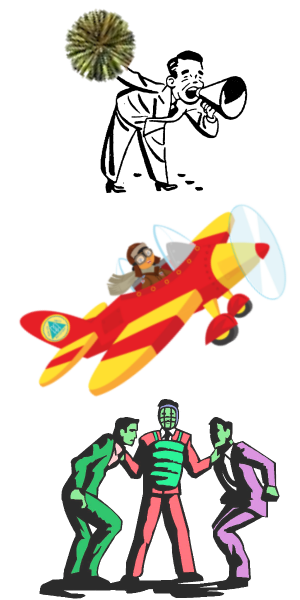
- Communicate the actions of the Conference to area committee members and encourage them to pass on this information, and the delegate’s enthusiasm, to groups and to intergroups/central offices.
- Be prepared to attend all area and regional service meetings and assemblies applicable to his/her respective area. From these meetings, delegates come to better understand their own areas and can make suggestions for the Conference agenda.
- Provide leadership in solving local problems involving the A.A. Traditions.
- Visit groups and districts in the area whenever possible.
-from of the A.A. Service Manual pg. S50

Membership in the Conference consists of area delegates, trustees, directors of A.A. World Services and the Grapevine, and A.A. staff members of the General Service Office and the Grapevine. Traditionally, area delegates make up at least two-thirds of the Conference body. At the annual Conference meeting, matters of importance to the Fellowship as a whole are first considered and discussed by one of the standing Conference committees, then brought to the full Conference in the form of committee recommendations. All Conference members then have the opportunity to ask questions and discuss the recommendations before they are voted on. Committee recommendations that are approved become Conference Advisory Actions….any Conference Advisory Actions that were referred to the trustees are sent to either the appropriate trustees’ committee, G.S.O., or AA Grapevine for implementation.
-from of the A.A. Service Manual pg. S17

A typical Conference lasts a full week, with sessions running from morning to evening. The opening day features roll call, keynote address, an opening dinner and a five-speaker A.A. meeting. Business sessions from Sunday to Friday include committee meetings, presentations, workshops, and new trustee elections.
Each delegate serves on one of the standing Conference committees, which meet early in the week and do the principal work of the Conference.
- The committees bring recommendations to the full Conference for consideration as possible Advisory Actions, and generally the last two days (or more) are devoted to discussion and voting on committee recommendations.
- In order to become an Advisory Action, a recommendation must be approved by “substantial unanimity” — defined as a two-thirds majority.
- A simple majority vote of the Conference shall be considered a suggestion to the General Service Board and to G.S.O. or the Grapevine.
After the vote, the Conference chairperson calls for minority opinions — and occasionally, a well-reasoned minority opinion can result in another vote, reversing the first decision. Ideally, of course, that is the rare exception; any matter should be so thoroughly considered before a vote is taken that the Conference’s original conclusion will stand.
-from of the A.A. Service Manual pgs. S57 and S58
The U.S./Canada Conference structure is the framework in which these “general services” are carried out. It is a method by which A.A.’s collective group conscience can speak forcefully and put its desires for Conference-wide services into effect. It is the structure that takes the place of government in A.A., ensuring that the full voice of A.A. will be heard and guaranteeing that the desired services will continue to function under all conditions.
-from of the A.A. Service Manual pg. S15



The General Service Board is made up of 21 trustees. It meets quarterly, and its actions are reported to the Fellowship through quarterly reports and also in the Final Conference Report. The board’s two operating corporations, A.A. World Services, Inc. and AA Grapevine, Inc.,…A.A.W.S. is the corporation that employs G.S.O. personnel, directs G.S.O. services, and is responsible for book and pamphlet publishing. The Grapevine corporate board employs the magazine’s editorial and business staffs and publishes A.A.’s monthly magazines (Grapevine and La Vina) and related materials.
-from of the A.A. Service Manual pg. S15

The Board of Trustees consists 14 alcoholics (Class B) and seven nonalcoholics (Class A), who bring varying talents and backgrounds to their service responsibilities. There is always a careful balance on the board between trustees who are elected primarily to bring regional and A.A. service experience to the board and those selected primarily for business or other professional backgrounds.
-from of the A.A. Service Manual pg. S65
Nonalcoholic (Class A) Trustees: “In the days when A.A. was unknown, it was the nonalcoholic trustees who held up our hands before the general public. They supplied us with ideas.... They voluntarily spent hours on end, working side by side with us and among the grubbiest of details. They gave freely of their professional and financial wisdom. Now and then they helpfully mediated our difficulties.” - Bill W. 1966

Nonalcoholic trustees remain a rich source of wisdom and perspective, and since they need not maintain anonymity, they are available to appear in public on behalf of A.A.
Board members make an effort to choose Class A trustees from a variety of professional backgrounds…. Whatever their backgrounds, the bylaws make one key provision for nonalcoholic trustees: they “shall be persons who are not and have not been afflicted by the disease of alcoholism and who express a profound faith in the recovery program upon which the Fellowship of Alcoholics Anonymous is founded.”
-from of the A.A. Service Manual pg. S68
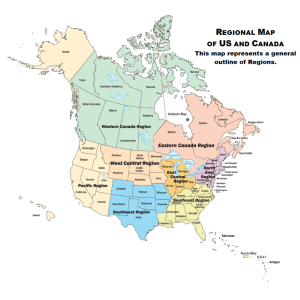
There are eight regional trustees, six from the United States and two from Canada…. While no trustee can be said to “represent” a geographical section — all trustees represent only the Fellowship as a whole — regional trustees bring to the board’s discussions a regional A.A. point of view and experience that is invaluable.
There are two trustees-at-large, one from the U.S. and one from Canada. Each serves four successive annual terms. The trustees-at-large are members of the trustees’ International Committee and other trustees’ committees, and can be appointed as directors of one of the corporate boards. They may fill in for regional trustees, as needed or requested.
Trustees-at-large serve as the World Service Meeting delegates representing the U.S. and Canada. As such, they participate in two World Service Meetings, which are held every two years. They also serve as delegates to the Meeting of the Americas, a zonal meeting held in alternate years when the World Service Meeting is not being held.
-from of the A.A. Service Manual pgs. S68 to S70

General Service Trustees: There are four general service trustees, two from the A.A. World Services Board and two from the Grapevine, who serve on these boards and are available at any time for the solution of problems on which G.S.O. or Grapevine staff members need help.
A.A. has been fortunate to have general service trustees with the kind of business or professional acumen that is particularly applicable to the problems at hand…. General service trustees can share with the General Service Board the operations of A.A.W.S. and the Grapevine, thus increasing the awareness of all trustees on these matters.
-from of the A.A. Service Manual pg. S71


- This page is largely based on resources from aa.org and Area 15. Our links do not constitute or indicate review or affiliation.
- All references on this page to the A.A. Service Manual are based on and link to the 2018 to 2020 edition. For the current version of the Service Manual go to www.aa.org/aa-service-manualtwelve-concepts-world-services.


















